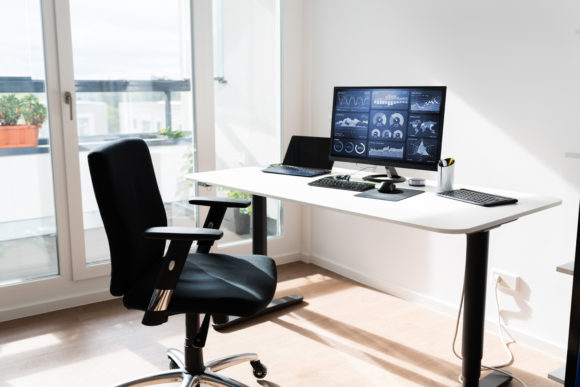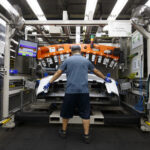A ruling by a New York appellate court could bring more workers’ compensation claims by work-from-home employees by removing strict compensability standards established last year by the state Workers’ Compensation Board.
The 3rd Judicial Department of the Supreme Court Appellate Division on Oct. 22 overturned a board decision that found workplace injuries are not compensable unless they occur during working hours and while actively involved in work duties. The appellate court wrote a lengthy opinion criticizing the “rigid new standard” set by the full board when denying a claim by a worker who was injured while carrying office furniture upstairs during his lunch break.
Jason D. Lewis, an attorney with Chartwell Law in White Plains, N.Y., wrote in a blog post Friday that the decision in Capraro v. Matrix Absence Management will likely lead to more claims by work-from-home employees.
“The holding of the Appellate Division essentially reverses the stricter standard for work-from-home employees articulated by the full board back in May 2019,” Lewis wrote. “Therefore, with this holding, there is a stronger likelihood that employees sustaining injuries while working from home, even while not actively engaged in their true work activities, may have a compensable workers’ compensation claim.”
Christopher Capraro was hired to work from home as a claims examiner and was provided a computer by his employer, but not a desk or chair. Capraro purchased office furniture that was delivered in boxes. He was injured while carrying those boxes upstairs to his home office on June 13, 2016.
The full Workers’ Compensation Board in May 2019 affirmed a workers’ compensation law judge’s ruling that Capraro’s injury not arise out of and in the course of employment. Lewis said the board’s decision “significantly dialed-back some of its more relaxed rules of compensability” that had been in place before then.
The Appellate Division reverses the new standards. Justice Michael C. Lynch wrote in the 4-0 decision that the new standard was not supported by precedent and inconsistent with the remedial nature of the Workers’ Compensation Law.
The Appellate Division remanded the matter back to the Board to consider if moving the furniture, even during the claimant’s lunch hour, was “sufficiently work-related and therefore, not purely personal.”
Lewis said in his blog that the upshot is that claims are likely to be approved if telecommuting employees are injured while on short breaks, such as for coffee. He said the court’s decision “did not address the simple fact that the work-from-home environment does not truly follow the structure of a physical office setting, and the employer loses significant control over safety issues.”
Lewis recommended that employers implement clear procedures for employees working from home, such as clearly defining working hours and work duties. Employers should document what items are required for work and will be provided by the employer.
Scarsdale attorney Annette G. Hasapidis, who represented Capraro on appeal, said the four-page opinion that the Appellate Division wrote to overturn the board shows that the justices strongly disagreed with strict compensability standards. New York appellate decisions rarely run longer than a few paragraphs.
“It’s a big deal,” she said. “I don’t think they would come out this strongly and discussed this at such length if it weren’t. I think they were very concerned about the legal analysis that was employed before.”
Was this article valuable?
Here are more articles you may enjoy.


 Alibaba Teams up With BMW to Develop AI for Cars in China
Alibaba Teams up With BMW to Develop AI for Cars in China  State Farm Has Paid $2.5 Billion in Claims for LA Wildfires
State Farm Has Paid $2.5 Billion in Claims for LA Wildfires  Auto Insurer Fined for Data Breach That Impacted 45K New Yorkers
Auto Insurer Fined for Data Breach That Impacted 45K New Yorkers  Carney Pledges Billions for Canada Auto Sector in Trade War
Carney Pledges Billions for Canada Auto Sector in Trade War 